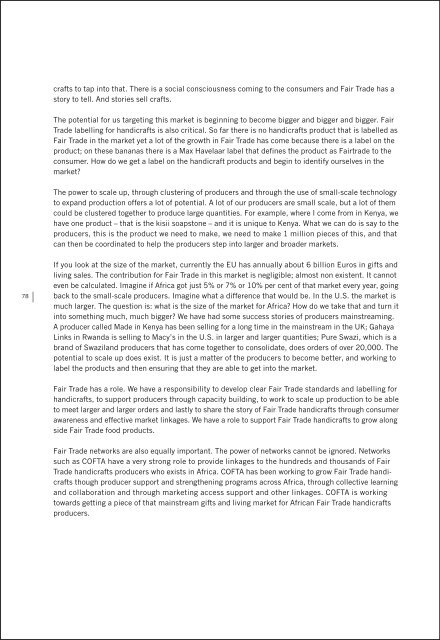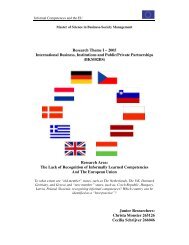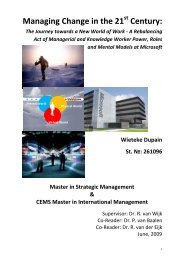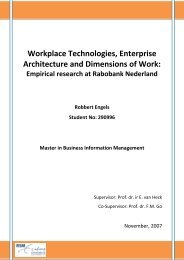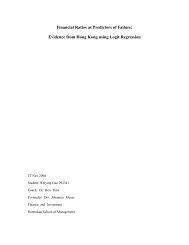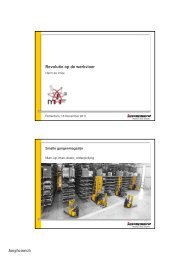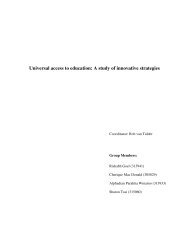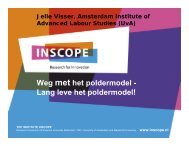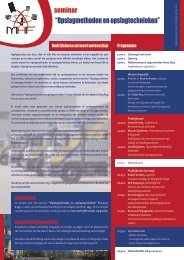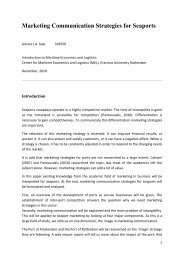Download With great power comes great responsibility (pdf) - ERIM
Download With great power comes great responsibility (pdf) - ERIM
Download With great power comes great responsibility (pdf) - ERIM
You also want an ePaper? Increase the reach of your titles
YUMPU automatically turns print PDFs into web optimized ePapers that Google loves.
78<br />
crafts to tap into that. There is a social consciousness coming to the consumers and Fair Trade has a<br />
story to tell. And stories sell crafts.<br />
The potential for us targeting this market is beginning to become bigger and bigger and bigger. Fair<br />
Trade labelling for handicrafts is also critical. So far there is no handicrafts product that is labelled as<br />
Fair Trade in the market yet a lot of the growth in Fair Trade has come because there is a label on the<br />
product; on these bananas there is a Max Havelaar label that defines the product as Fairtrade to the<br />
consumer. How do we get a label on the handicraft products and begin to identify ourselves in the<br />
market?<br />
The <strong>power</strong> to scale up, through clustering of producers and through the use of small-scale technology<br />
to expand production offers a lot of potential. A lot of our producers are small scale, but a lot of them<br />
could be clustered together to produce large quantities. For example, where I come from in Kenya, we<br />
have one product – that is the kisii soapstone – and it is unique to Kenya. What we can do is say to the<br />
producers, this is the product we need to make, we need to make 1 million pieces of this, and that<br />
can then be coordinated to help the producers step into larger and broader markets.<br />
If you look at the size of the market, currently the EU has annually about 6 billion Euros in gifts and<br />
living sales. The contribution for Fair Trade in this market is negligible; almost non existent. It cannot<br />
even be calculated. Imagine if Africa got just 5% or 7% or 10% per cent of that market every year, going<br />
back to the small-scale producers. Imagine what a difference that would be. In the U.S. the market is<br />
much larger. The question is: what is the size of the market for Africa? How do we take that and turn it<br />
into something much, much bigger? We have had some success stories of producers mainstreaming.<br />
A producer called Made in Kenya has been selling for a long time in the mainstream in the UK; Gahaya<br />
Links in Rwanda is selling to Macy’s in the U.S. in larger and larger quantities; Pure Swazi, which is a<br />
brand of Swaziland producers that has come together to consolidate, does orders of over 20,000. The<br />
potential to scale up does exist. It is just a matter of the producers to become better, and working to<br />
label the products and then ensuring that they are able to get into the market.<br />
Fair Trade has a role. We have a <strong>responsibility</strong> to develop clear Fair Trade standards and labelling for<br />
handicrafts, to support producers through capacity building, to work to scale up production to be able<br />
to meet larger and larger orders and lastly to share the story of Fair Trade handicrafts through consumer<br />
awareness and effective market linkages. We have a role to support Fair Trade handicrafts to grow along<br />
side Fair Trade food products.<br />
Fair Trade networks are also equally important. The <strong>power</strong> of networks cannot be ignored. Networks<br />
such as COFTA have a very strong role to provide linkages to the hundreds and thousands of Fair<br />
Trade handicrafts producers who exists in Africa. COFTA has been working to grow Fair Trade handi -<br />
crafts though producer support and strengthening programs across Africa, through collective learning<br />
and collaboration and through marketing access support and other linkages. COFTA is working<br />
towards getting a piece of that mainstream gifts and living market for African Fair Trade handicrafts<br />
producers.<br />
THE GOVERNMENT PERSPECTIVE<br />
BEYOND FAIRTRADE!<br />
Jan Pronk, former Minister of Housing, Spatial Planning and the Environment (VROM),<br />
Minister of Development Cooperation, vice-chairman of UNCTAD, the Un organisation on Trade Aid<br />
and Development<br />
If we really want to achieve fair trade, just buying Fairtrade products is not enough. This was the principal<br />
message contained in the passionate speech given by Jan Pronk, during the Max Havelaar Lecture<br />
2010, which was held yesterday at Erasmus University. This short journalistic account gives a<br />
summary of key point of the lecture. For the whole speech, visit the website:<br />
www.maxhavelaarlecture.org<br />
Beyond Fairtrade<br />
The <strong>power</strong> of the consumer extends far beyond the purchase of Fairtrade products. The consumer<br />
must use this far-reaching <strong>power</strong> to also effect large-scale change. In order to reduce the economic<br />
differences between the West and the Third World the consumer should in fact adopt a more sustainable<br />
way of life, which encompasses more than just buying Fairtrade products. In particular, it means the<br />
consumer must be consistent in his refusal to purchase certain products.<br />
Say No to overfishing<br />
To give an example: fish stocks on the West African coast have been overexploited for years by large,<br />
illegal fishing boats. Some of these, according to a Greenpeace blacklist, are European trawlers sailing<br />
under Italian or Portuguese flag. These practices have a huge negative impact on small-scale African<br />
79


